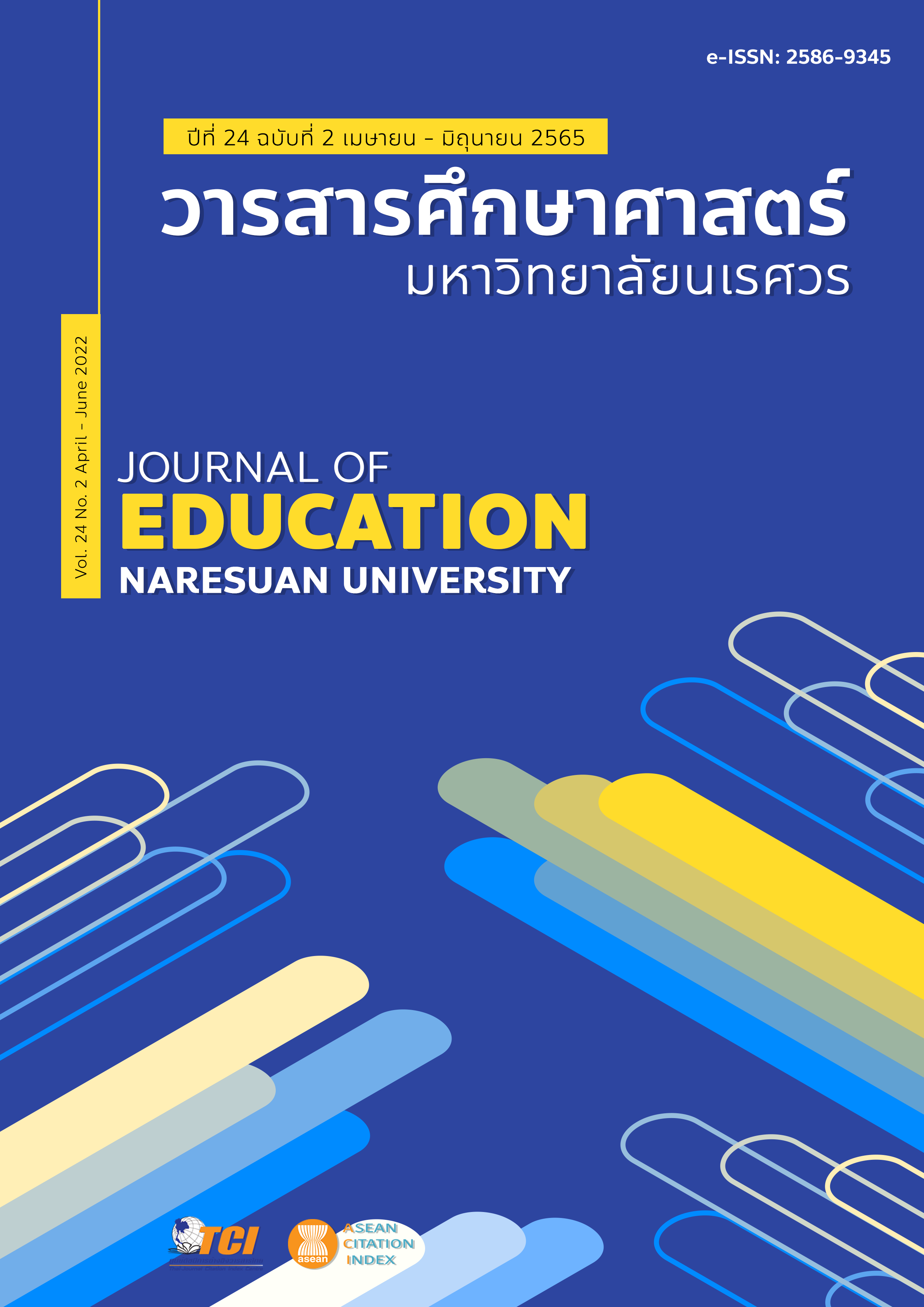USING PERSONALITY INVENTORIES IN THE EDUCATIONAL SELECTION การใช้แบบวัดบุคลิกภาพในกระบวนการคัดเลือกบุคคลในบริบททางการศึกษา
Main Article Content
Abstract
Psychology testing, especially personality, has become an important role in selection practices in both education and industrial organization sectors. However, to implement psychology testing into the selection process has been challenged with social desirability response problems which respondents try to distort an answer in order to pass the selection. Consequently, there are currently many proposed solutions to this problem, in which one of those efficiency solutions is to construct measures with forced choice format. Nevertheless, forced choice format with traditional scoring has limitation in measuring individual difference that is a key point of the selection practices, which is called Ipsativity problem. Nowadays, Item Response Theory is applied to overcome this problem of forced choice format implementation. As a result of developed item response models, forced choice format with normative scoring approach can be practically implemented in selection context.
Article Details

This work is licensed under a Creative Commons Attribution-NonCommercial-NoDerivatives 4.0 International License.
The owner of the article does not copy or violate any of its copyright. If any copyright infringement occurs or prosecution, in any case, the Editorial Board is not involved in all the rights to the owner of the article to be performed.
References
Brown, A., & Olivares, A. M. (2011). Item Response Modeling of forced-choice questionnaires, Educational and Psychological Measurement, 71(3), 460-502.
Brown, A. (2015). Personality assessment forced choice. In Wright, J.D., ed. International Encyclopedia of the Social and Behavioral Sciences. Elsevier.
Cao, M. (2016). Examining the fixability of forced-choice individual differences measures (Doctoral dissertation). Illinois: University of Illinois.
Clemans, W. V. (1966). An analytical and empirical examination of some properties of ipsative
measures. Richmond, VA: Psychometric Society.
Clemans, W. V. (1967). An analytical and empirical examination of some properties of ipsative measures. Richmond, VA: Psychometric Society.
Jantawarn, S. (2013). Development of a socially desirable responding scale of Thai undergraduate students (Doctoral dissertation). Bangkok: Chulalongkorn University. [in Thai]
Kaplan, R. M., & Saccuzzo, D. P. (2009) Psychological testing: Principles, applications, and issues. Belmont, CA: Wadsworth Cengage Learning,
Kline, P. (2000). The handbook of psychological testing (2nd ed.). London: United Kingdom Routledge.
Lee, P., Lee, S., & Stark, S. (2018). Examining validity evidence for multidimensional forced choice measures with different scoring approaches. Personality and Individual Differences, 123, 229-235. 10.1016/j.paid.2017.11.031.
Mueller-Hanson, R., Heggestad, E. D., & Thornton, G. C. (2003). Faking and selection: Considering the use of personality from select-in and select-out perspectives. Journal of Applied Psychology, 88(2), 348–355.
Hontangas, P. D., Torre, J. D., Ponsoda, V., Leenen, I., Morillo, D., & Abad, F. J. (2015). Comparing traditional and IRT scoring of forced-choice tests. Applied Psychological Measurement, 39(8), 598-612.
Salgado, J. F., Anderson, N., & Tauriz, G. (2015). The validity of ipsative and quasi-ipsative forced-choice personality inventories for different occupational groups: A comprehensive meta-analysis. Journal of Occupational and Organizational Psychology, 88(4), 797–834.
Stark, S., Chernyshenko, O. S., Drasgow, F., & White, A. (2012). Adaptive Testing with Multidimensional Pairwise Preference Items: Improving the efficiency of personality and other noncognitive assessment. Organizational Research Methods, 15(3), 463-487.
Stark, S., Chernyshenko, O. S., Drasgow, F., Nye, D., White, A., Heffner, T., & Farmer, L. (2014). From ABLE to TAPAS: A new generation of personality tests to support military selection and classification decisions. Military Psychology, 26(3), 153-164.
Stark, S., Chernyshenko, O. S., & Drasgow, F. (2005). An IRT approach to constructing and scoring pairwise preference items involving stimuli on different dimensions: An application to the problem of faking in personality assessment. Applied Psychological Measurement, 29, 184- 201.
Stark, S., Chernyshenko, O. S., & Drasgow, F., & Williams, B. A. (2006). Item responding in personality assessment: Should ideal point methods be considered for scale development and scoring? Journal of Applied Psychology, 91, 25-3.
Touze, P. (2005). Personality and prediction of performance in the workplace. Personality and performance, 68(1), 37-53.
Wang, W. C., Qiu, X. L., Chen, C. W., Ro, S., & Jin, K. Y. (2017). Item Response Theory Models for Ipsative Tests with Multidimensional Pairwise. Comparison Items. Applied Psychological Measurement, 41(8), 600–613.
Zhang, B. (2018). Though forced, still valid: Psychometric equivalence of forced-choice and single-statement measures (Doctoral dissertation). Illinois: University of Illinois.


